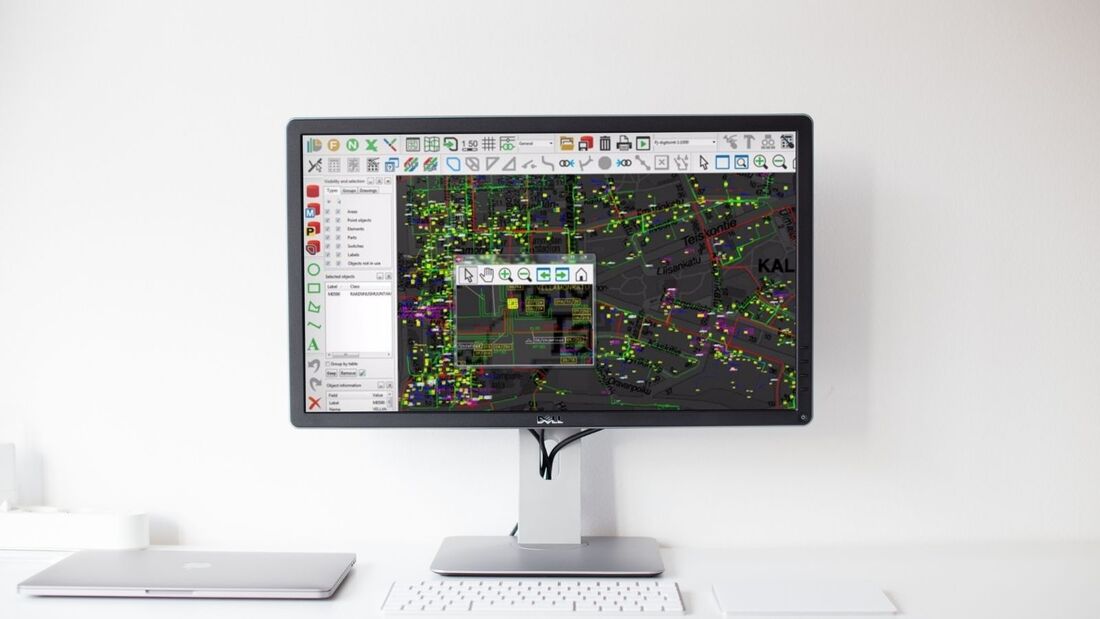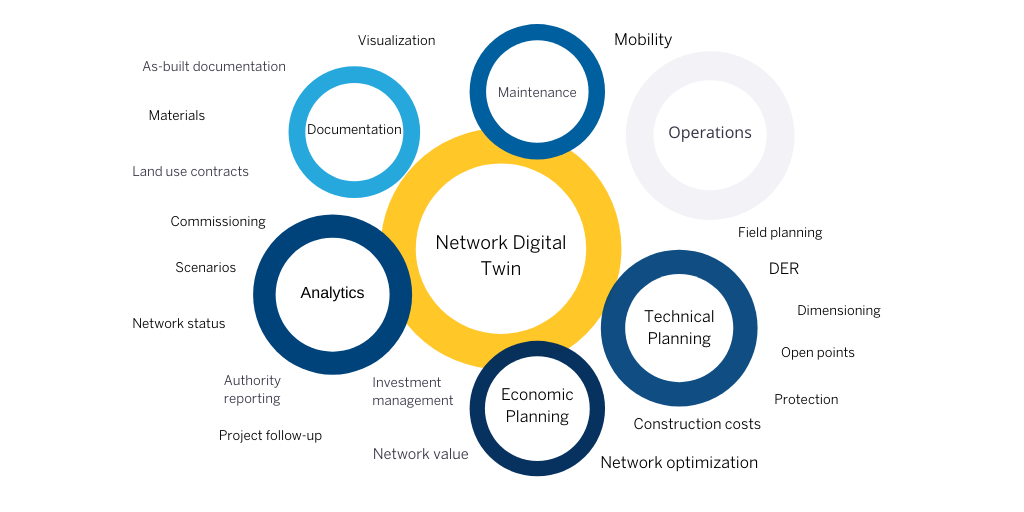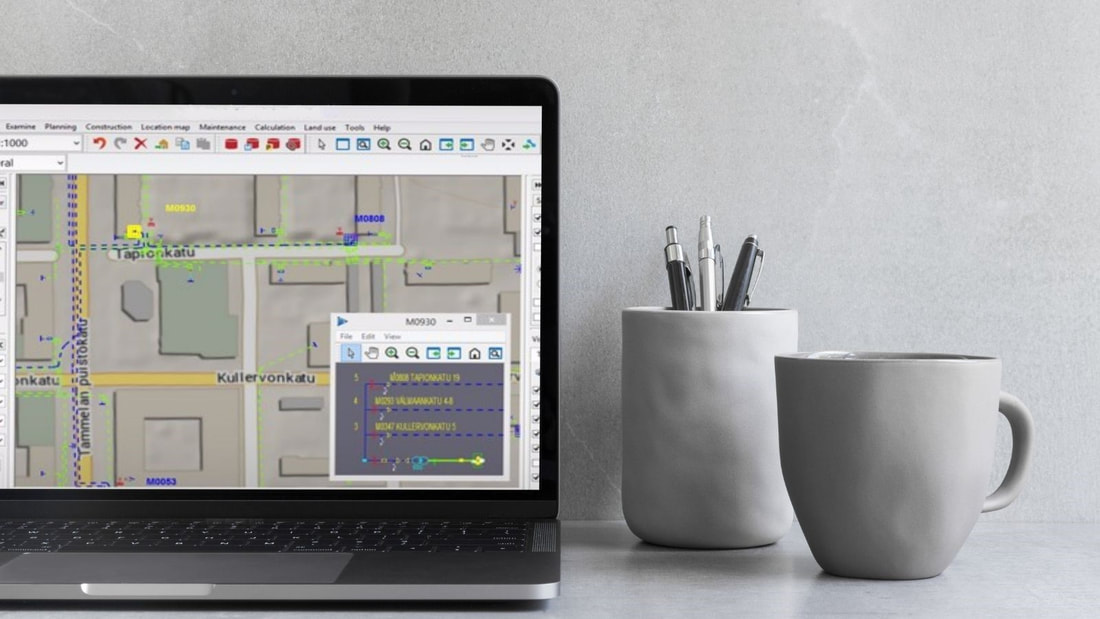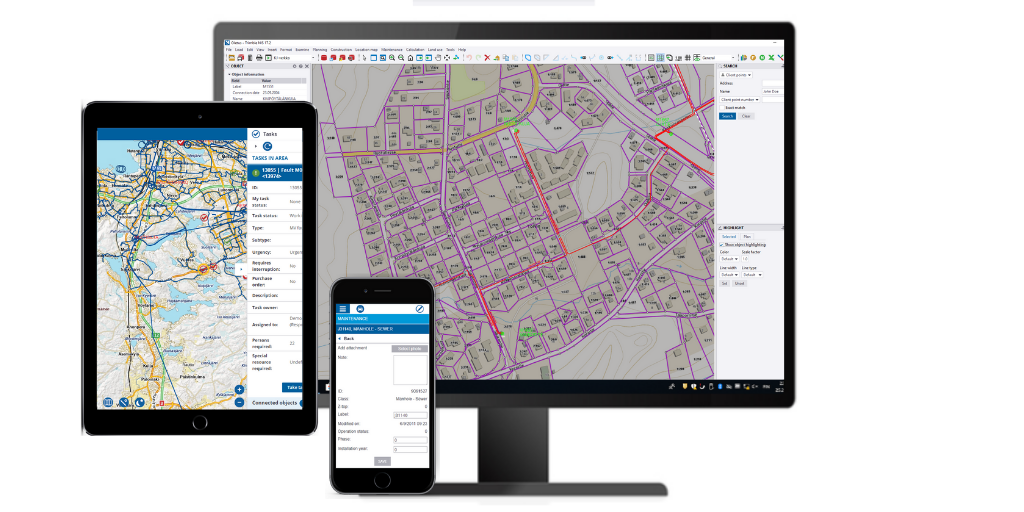Manage electricity distribution network assets with a digital twin of your network

Trimble NIS is a Network Information System for documenting and managing utilities' network assets. It provides a comprehensive view of a utility’s physical network by creating an intelligent virtual model - a digital twin- of the network with integrated GIS, network topology, and support for asset lifecycle management.
Over time, this intelligent network model accumulates data about assets, their structure, location, and operation, and becomes the exact digital replica of a utility’s physical network. On the top of that data, Trimble NIS uses intelligent applications for
- Investment planning and analysis
- Network design and technical planning
- Asset maintenance
Trimble NIS holds the key to superior asset lifecycle management and optimal decision making through combining the network digital twin with CIS, EAM/AMS, and ERP.
How will an Electricity Utility benefit from Trimble NIS?
- One reliable system for all asset data supporting the entire network lifecycle
- A significant improvement in the efficiency of network asset lifecycle management
- Wide support for strategic investment planning and decision making
- Secure and efficient access to the system by external users (e.g. contractors)

Investment Planning and Analytics with Trimble NIS

Where are the network weaknesses and what are the options to strengthen them? What is the influence of planned investments on asset value, life cycle costs and reliability?
The investment planning and analytics tools of Trimble NIS can answer these questions and help Utilities gain a fact-based view into where they need to invest to remain resilient, increase efficiency, stay in compliance, and provide better customer service. Leverage the following solutions for investment planning and analytics:
NETWORK RELIABILITY ANALYSIS
Identify network parts that are unsatisfactory either in terms of distribution reliability or your utility’s targets. Discover what kind of unreliability the different network parts experience and what causes that. Examine your reliability indices such as SAIDI, SAIFI and CAIDI, and life-cycle costs including investment costs (CAPEX), maintenance costs (OPEX), and outage costs. Compare and evaluate alternative network structures.
NETWORK OPTIMIZER
Leverage a next-generation planning solution whose power lies in the ability to effortlessly evaluate countless design scenarios. You will get future-proof, technically safe and feasible network designs where investments, maintenance costs, outage costs, and operational costs and losses are minimized. These network designs are uniform in quality, which supports data-driven investment decisions and helps you base investment decisions on the facts, regardless of whether you are dealing with future or existing networks. Considering the entire network life-cycle costs in network planning enables the utility to save both in investments and in operative costs.
NETWORK INVESTMENT MANAGEMENT
Examine how to develop your network by comparing alternative network structures from different viewpoints by weighing the electro-technical, reliability, and economical aspects. Evaluate life-cycle impacts of the different options to find the most potential development areas. The application enables access to targets and budgets, estimated and actual KPIs, investment projects, and any plans created during the network planning process. All the information you need to manage network investments, can be found in one place and is updated automatically when network plans are updated.
Network Design and Technical Planning with Trimble NIS

What would be the best way to construct a distribution network in order to optimize costs, asset value, reliability, and sustainability? How can technical and economical planning be efficiently combined with network planning?
Network design and technical planning tools of Trimble NIS can help Utilities with these questions.
NETWORK PLANNING AND CONSTRUCTION
Manage utility network’s life cycle from the very beginning of strategic long-term planning all the way to construction.
Manage the materials, actions and costs for network construction. The data for construction planning is automatically generated from the network model in combination with configurable, standard material packages and price lists. It is easy to create construction projects from the network model plans, including actual budgets with material and work costs.
The results of construction planning can be utilized, for example, in external ERP (Enterprise Resource Planning) systems through standard interfaces. Using outsourced contractors also in the construction planning phase is smooth with extensive access control.
POWER SYSTEM ANALYSIS
Connect different planning scenarios with your existing utility network and use PSA to observe the implications on load-flow, short-circuit, earth fault, and voltage dip calculations. The network analyses are based on an intelligent network model combined with hourly measurements, load profiles and annual energy, and the data can be viewed as numerical or graphical.
Integrate Power System Analysis to your ERP for material costs and gain a better understanding of the total construction costs. Submit plan information back to your EAM or ERP for smooth construction and project management.
NETWORK OPTIMIZER
Compare and evaluate countless network design scenarios in an instant with the help of robotics. Instead of spending time and effort on laborious routines, select objects and click a button: the planning robot will generate network models, dimension lines and fuses, locate switches, search for routings, and calculate cost impacts. You will get technically safe and feasible, future-proof network designs that are consistent in quality.
Asset Maintenance with Trimble NIS

What is the condition of the network asset and how to make maintenance decisions based on that information? What are the most critical reliability and safety risks in the network? Is maintenance field work productive?
With Trimble NIS, utilities can make smart asset maintenance decisions and find the optimal target and timing for maintenance actions. Reliability-based maintenance brings cost-savings and maximizes asset lifespan. Similarly, field crew productivity is increased when moving towards self-directed maintenance.
NETWORK MAINTENANCE
Manage your overall maintenance programs and plan and schedule maintenance actions by basing your decisions on asset condition indices, budget, and resources. Aligning maintenance with investment planning eliminates unnecessary inspections and maintenance work, for example, on assets that will be demolished in the near future. With Trimble NIS maintenance tools, the intelligent, virtual model of your utility’s network accumulates up-to-date maintenance data, making it available for all users.
FIELD WORK SUPPORT AND MOBILITY
Support self-directed maintenance with mobile solutions to ensure your field crews and contractors work productively. Enhance maintenance data flow from the office to the field and back and enable your field crews to view the network information and update maintenance data directly in the field.

